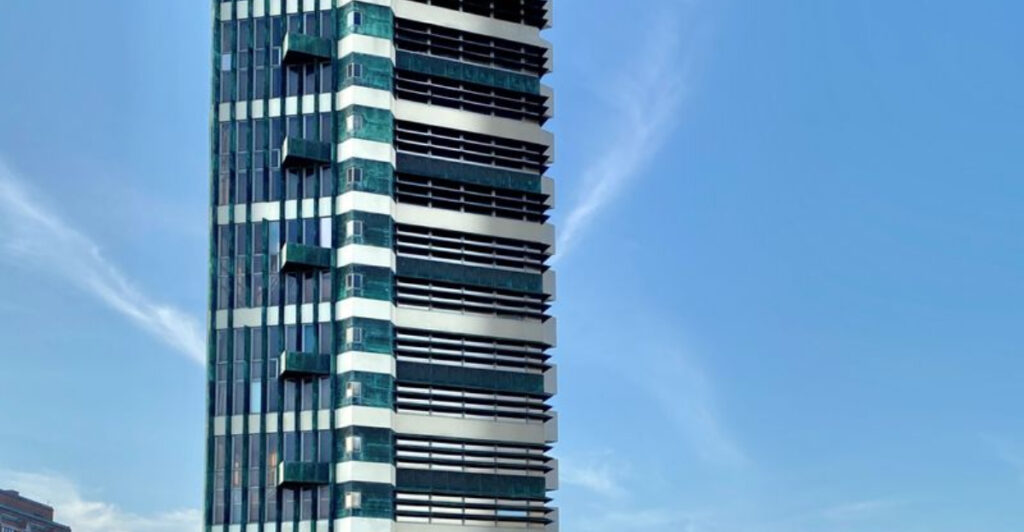Frank Lloyd Wright, a visionary in the world of architecture, left behind a legacy of stunning designs that continue to captivate visitors. His houses, characterized by unique structures and harmonious blending with nature, offer a glimpse into his genius. For those interested in exploring these architectural marvels, here are 16 Frank Lloyd Wright houses open to the public, each telling its own story and showcasing the evolution of Wright’s design philosophy.
1. Fallingwater
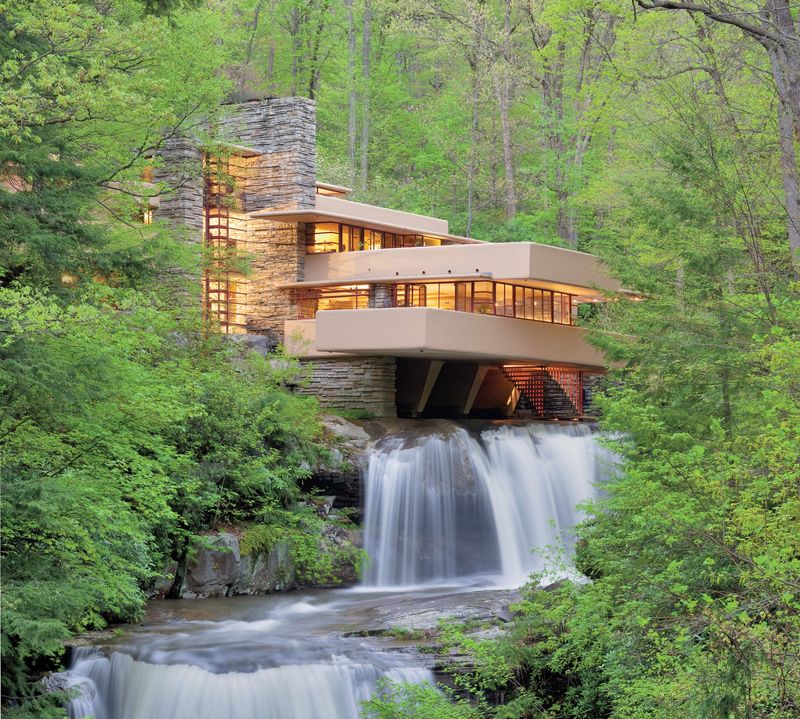
The legendary Fallingwater is not just a house; it’s a masterpiece floating over a waterfall. Frank Lloyd Wright designed it for the Kaufmann family in 1935, creating a striking harmony between architecture and nature. As you step inside, the rushing water’s sound is ever-present, a testament to Wright’s genius.
Visitors marvel at the bold cantilevered terraces that extend over the falls, creating an illusion of floating in mid-air. The use of local stone and glass ensures the structure seamlessly blends with its surroundings. Experience the serenity of this iconic design nestled in the woods.
2. Taliesin West
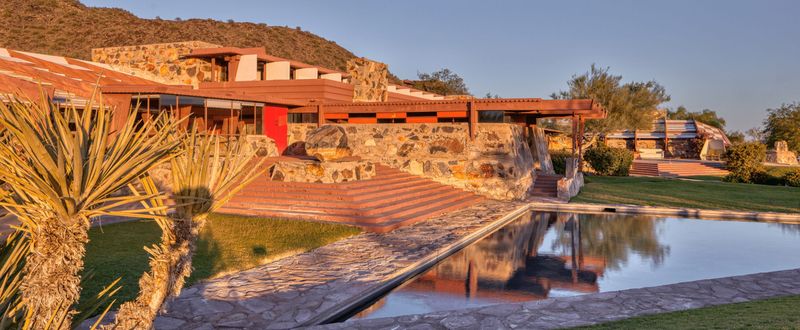
Frank Lloyd Wright’s winter home, Taliesin West, is a testament to his love for the Arizona desert. Built into the rugged landscape in 1937, it reflects his philosophy of organic architecture. The low, angular structures made from local materials seem to emerge naturally from the desert floor.
Wright’s innovations in design are evident in the open spaces and natural light filtering through translucent roofs. The ambiance is warm and inviting, a reflection of Wright’s passion for the environment. Visitors can explore the grounds and see firsthand the genius of Wright’s desert oasis.
3. The Robie House
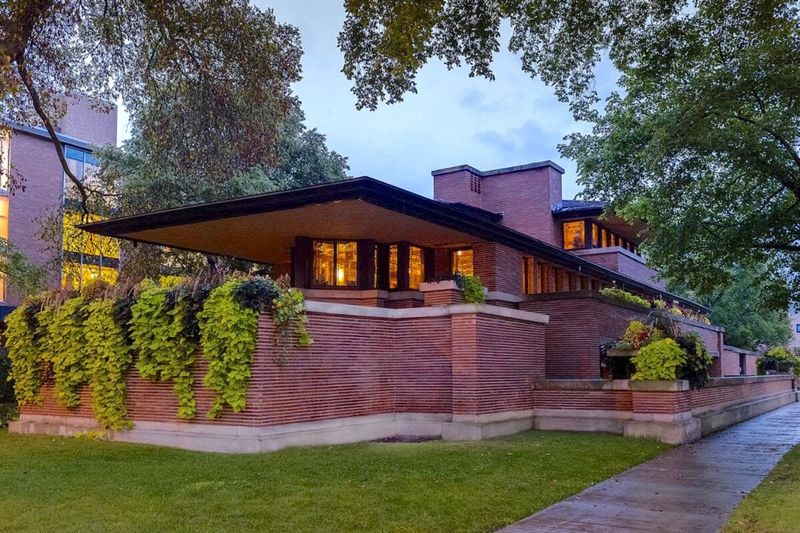
The Robie House, a quintessential example of Wright’s Prairie style, stands proudly in Chicago. Built in 1909, its horizontal lines and overhanging eaves are emblematic of Wright’s departure from traditional architecture.
Inside, the open floor plan is revolutionary, creating a seamless flow between rooms. Wright’s use of art glass windows bathes the interiors in soft, colorful light. The house is not just a residence; it’s a testament to Wright’s innovation in design. Visitors can appreciate the timeless elegance and influence of this architectural gem.
4. Hollyhock House
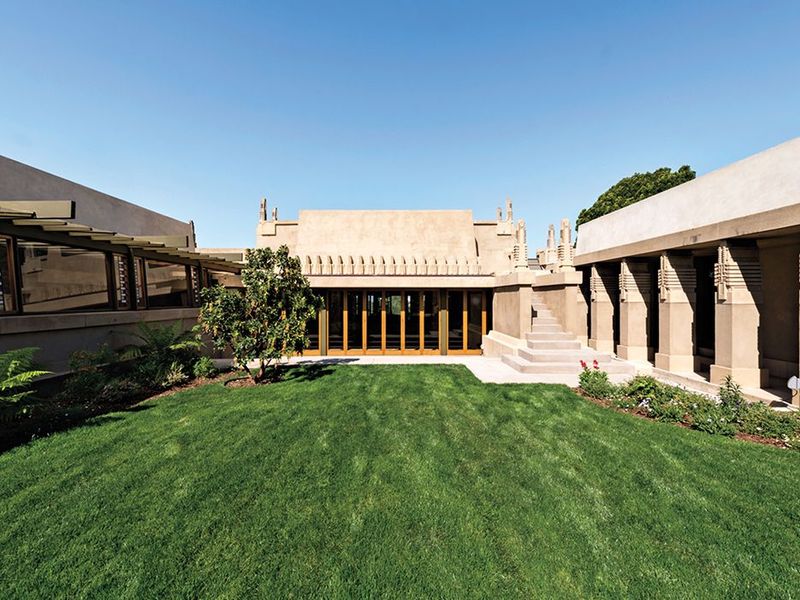
Hollyhock House, perched on a hill in Los Angeles, was completed in 1921 for oil heiress Aline Barnsdall. This architectural wonder blends Mayan influences with Wright’s innovative style.
The centerpiece, a dramatic living room with a glass ceiling, exudes elegance and creativity. Surrounding terraces and gardens invite leisurely strolls, enhancing the house’s connection to nature. Wright’s attention to detail is evident everywhere, from geometric motifs to custom-designed furniture. Visitors can explore this National Historic Landmark and experience its unique charm firsthand.
5. Taliesin
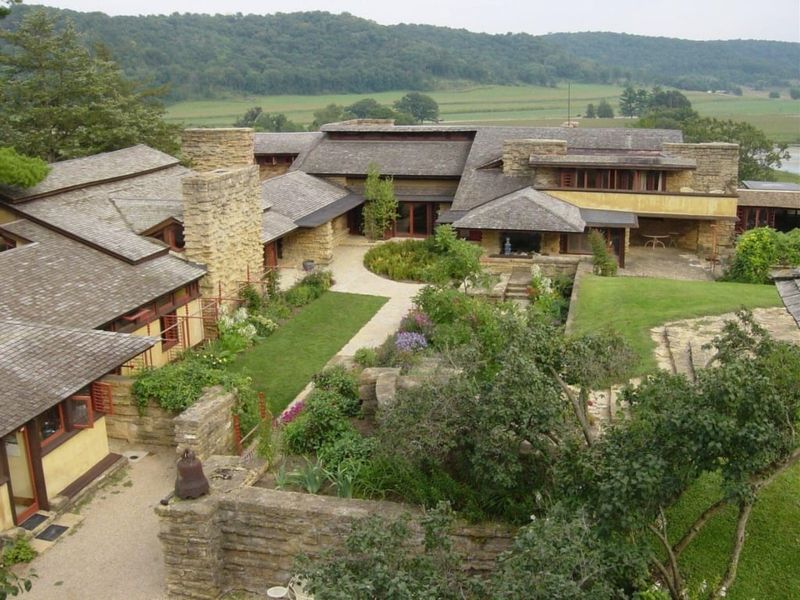
Nestled in Wisconsin’s rolling hills, Taliesin was Wright’s personal home and studio for nearly fifty years. It embodies his architectural philosophy, focusing on harmony with nature. The estate, with its flowing organic forms, reflects Wright’s vision of a living architecture.
The integration of structure and landscape is evident in every detail, from the placement of windows to the selection of materials. Walking through Taliesin, visitors feel a connection to the land and the legacy of Wright’s genius. This serene retreat continues to inspire architects and visitors alike.
6. Kentuck Knob
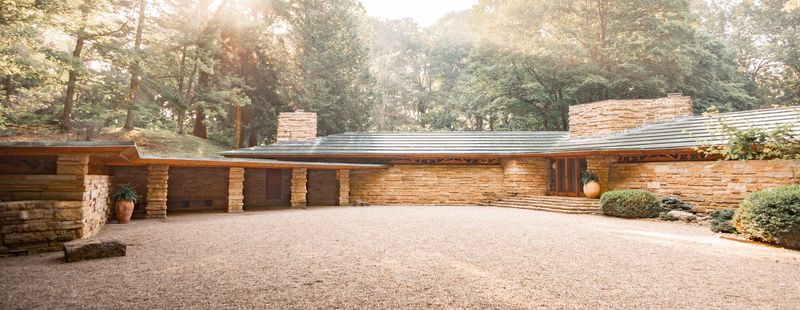
Perched on a hilltop in Pennsylvania, Kentuck Knob is a stunning example of Wright’s Usonian designs. Built in 1956, the house features sweeping cantilevered rooflines and is constructed from native stone, blending seamlessly with its surroundings.
This single-story home reflects Wright’s principles of organic architecture, creating a warm, inviting atmosphere. As you explore the interior, notice the bespoke furniture and built-in features that are quintessentially Wright. The surrounding sculpture garden adds an extra layer of artistic intrigue, making a visit to Kentuck Knob a unique experience.
7. Price Tower
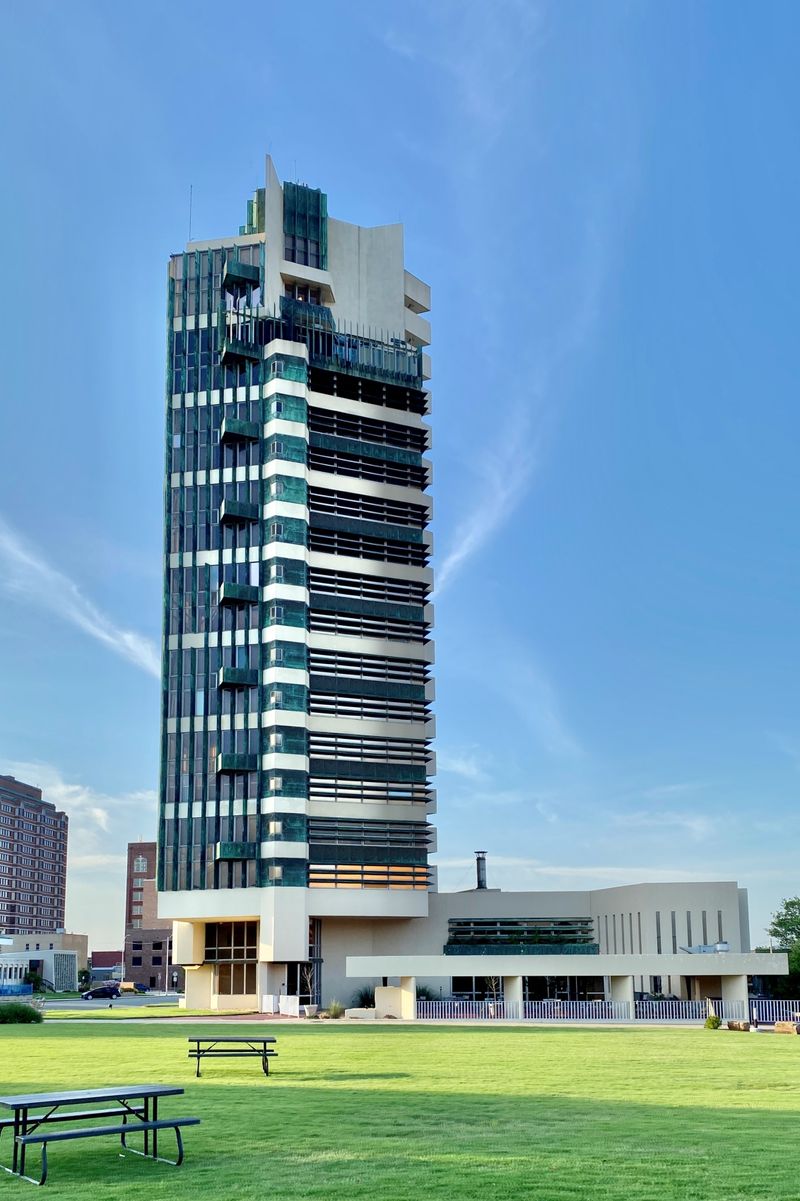
Price Tower in Bartlesville, Oklahoma, is one of Wright’s rare skyscrapers. Completed in 1956, this 19-story mixed-use tower is nicknamed “The Tree That Escaped the Crowded Forest.” Its copper façade and geometric design are striking against the cityscape.
Wright’s innovative use of space is evident throughout, with each floor uniquely designed for both form and function. The tower houses offices, apartments, and an art gallery, showcasing Wright’s versatility as an architect. Visitors can admire the panoramic views from the top floors and explore this vertical masterpiece.
8. Ennis House

Ennis House is a testament to Wright’s experimentation with textile block construction. Built in 1924 in Los Angeles, its monumental appearance and intricate designs have made it a favorite for films and pop culture.
The house’s Mayan Revival style and commanding views of the city offer a striking contrast to traditional homes. Inside, the unique ornamentation and spacious rooms reflect Wright’s vision of a modern residence. Exploring Ennis House allows visitors to appreciate the boldness and creativity of Wright’s architectural innovations.
9. Graycliff
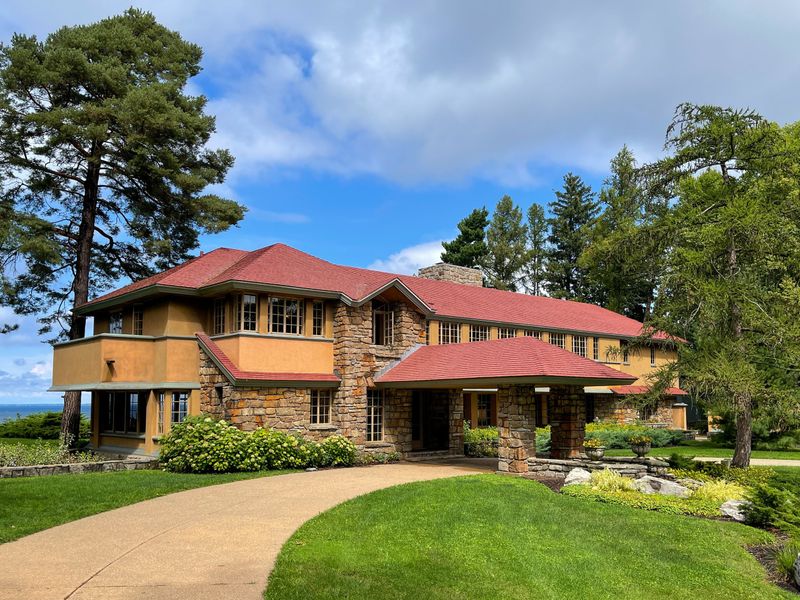
Graycliff, perched atop a bluff overlooking Lake Erie, served as a summer retreat for the Martin family. Built between 1926 and 1931, it beautifully showcases Wright’s Prairie style with its horizontal lines and open spaces.
The estate’s design blurs the lines between indoors and outdoors, highlighted by expansive windows framing the stunning lake views. Visitors can wander through the meticulously landscaped gardens, appreciating the harmony between architecture and environment. Graycliff is a serene escape that captures Wright’s commitment to creating peaceful, inspiring spaces.
10. The Westcott House
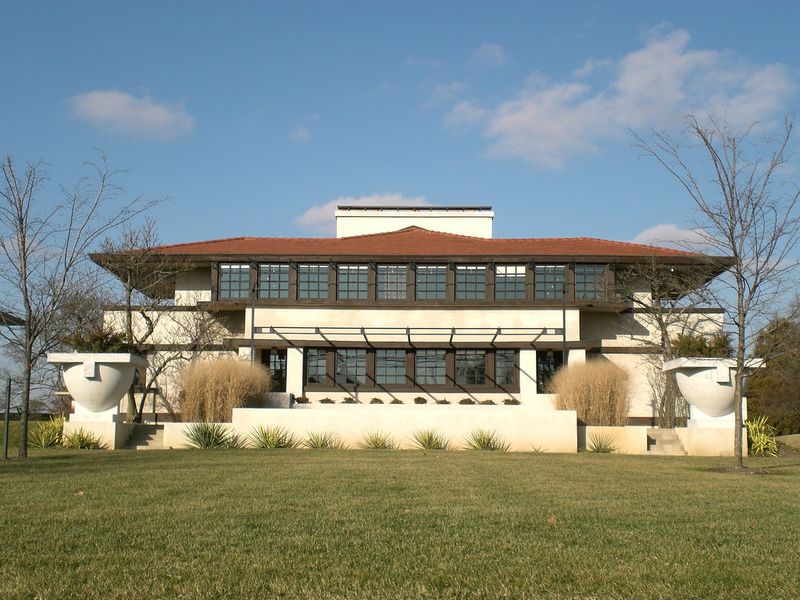
The Westcott House in Springfield, Ohio, is a beautifully restored example of Wright’s Prairie-style architecture. Built in 1908, it features hallmark elements such as low-pitched roofs and open floor plans.
The interiors are adorned with intricate art glass windows that fill the rooms with natural light, creating a warm and inviting atmosphere. After extensive restoration, visitors can now experience the house as Wright intended, with original furnishings and thoughtful design details. The Westcott House stands as a testament to Wright’s enduring influence on American architecture.
11. Unity Temple

Unity Temple, located in Oak Park, Illinois, is a celebrated example of Wright’s early work. Completed in 1908, this Unitarian Universalist church showcases Wright’s ability to create grandeur with simple geometric forms.
The temple’s bold use of concrete was revolutionary for its time, offering both durability and simplicity. Inside, the play of light and shadow enhances the spiritual ambiance, creating a serene space for reflection and worship. Wright’s design, both functional and beautiful, continues to inspire awe and admiration among visitors and architects alike.
12. Zimmerman House

The Zimmerman House in Manchester, New Hampshire, is a quintessential example of Wright’s Usonian homes. Built in 1950, it reflects his vision of affordable, functional homes integrated with nature.
The design features natural materials and an open floor plan, creating a sense of warmth and simplicity. The lush gardens surrounding the house further emphasize Wright’s connection to the environment. Visitors to the Zimmerman House can appreciate the elegance of Wright’s design philosophy and his commitment to creating livable, beautiful spaces for all.
13. Eppstein House
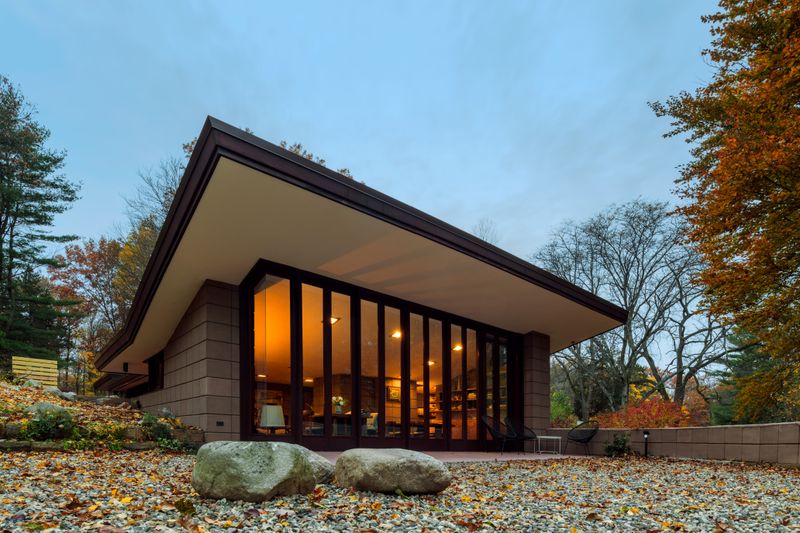
Nestled within the wooded landscapes of Michigan, the Eppstein House is a quintessential representation of Wright’s Mid-century modern designs. Completed in 1953, its sleek lines and minimalist approach create a harmonious blend with nature.
The house features expansive windows that invite the outdoors inside, a signature of Wright’s design ethos. The use of natural materials and open spaces offers a tranquil retreat for its inhabitants. Visitors can explore this architectural gem, appreciating the timeless elegance and simplicity that define Wright’s Mid-century masterpieces.
14. Rosenbaum House
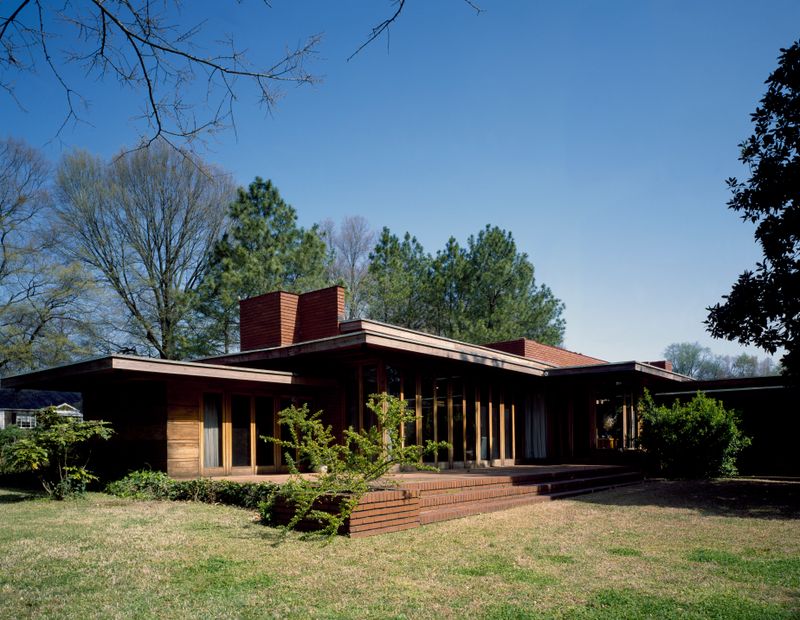
The Rosenbaum House in Florence, Alabama, is a stunning example of Wright’s Usonian architecture. Built in 1940, its red brick façade and open courtyard exemplify Wright’s vision of affordable and functional homes.
Inside, the house features custom-designed furniture and efficient spaces, reflecting Wright’s attention to detail. The integration of indoor and outdoor areas creates a seamless living experience. Restored to its original glory, the Rosenbaum House invites visitors to experience Wright’s innovative design and his commitment to creating harmonious living spaces.
15. Samara House
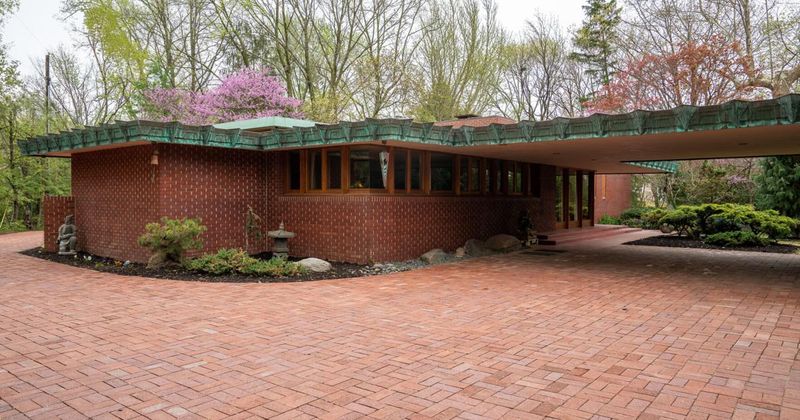
Samara House in West Lafayette, Indiana, offers a vibrant look at Wright’s Usonian designs. Completed in 1956, it features unique design elements tailored to the family’s desires, showcasing Wright’s flexibility and creativity.
The house’s open layout and integration with the landscape create a seamless blend of comfort and innovation. Visitors are invited to explore its colorful interiors and thoughtfully designed furnishings, all reflecting Wright’s vision of functional yet beautiful living spaces. Samara House stands as a testament to personalized architecture and Wright’s enduring legacy.
16. Dana-Thomas House
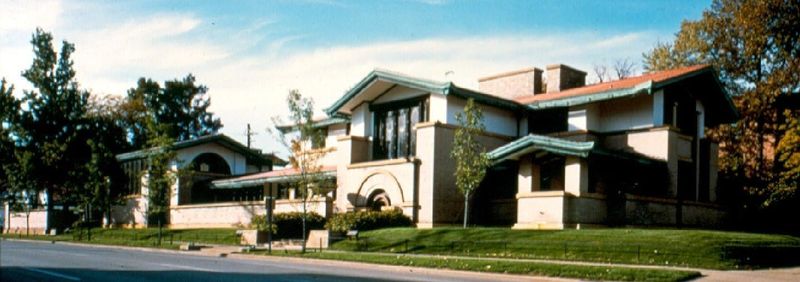
The Dana-Thomas House, located in Springfield, Illinois, is a grand example of Wright’s Prairie School architecture. Built in 1902, it showcases Wright’s artistry with over 100 pieces of original art glass and intricate woodwork.
The interiors feature spacious rooms and elegant furnishings, all designed by Wright to create a cohesive aesthetic experience. Visitors can explore the elaborate spaces and discover the subtle details that define this architectural masterpiece. The Dana-Thomas House remains a testament to Wright’s innovative spirit and his ability to transform living spaces into works of art.

